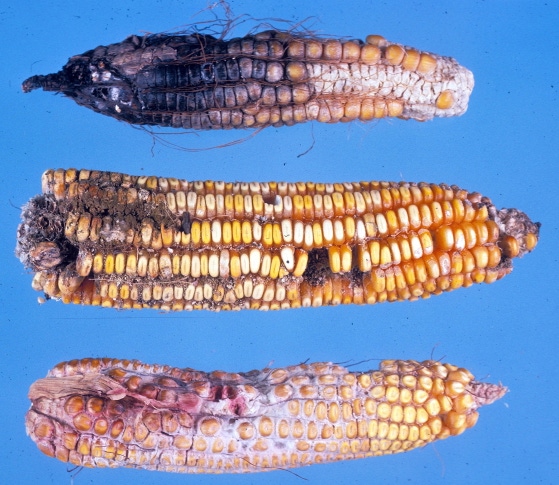October 5, 2011

The combination of a late harvest and wet weather could mean optimal conditions for development of corn ear molds, according to Ohio State University Extension Plant Pathologist Pierce Paul, a leading researcher of disease issues in corn and wheat at the Ohio Agricultural Research and Development Center (OARDC). He says the longer corn stands in the field under wet conditions, the higher the risk that molds will develop.
"We've still got fields of corn in several locations that have not yet hit black layer, or physiological maturity," Paul says. "Typically we'd be drying down and close to harvest at this point."
The big concern with ear molds is the potential development of mycotoxins, namely vomitoxin, also referred to as deoxynivalenol (DON). DON is often associated with reduced feed intake and performance issues in livestock, especially swine, Paul says.
He recommended farmers scout fields aggressively heading into harvest to assess conditions and evaluate options.
"Even though we have wet conditions, you still need to walk fields and pull ears to see what you have," Paul recommends. "Not every mold is associated with mycotoxin, so the very first step is to see what mold you have, if any, and what level of disease you're experiencing."
Paul says the three primary molds to scout for include gibberella, fusarium and diplodia, with gibberella presenting the most significant reason for concern because of its association with development of vomitoxin.
Diplodia, he says, also presents palatability issues in livestock rations made from moldy grain.
"Once you have an idea of the type of mold and the level of disease, you can determine your options with the grain," Paul says. "That will also let you know how to prioritize which fields need harvested first, and then if you need to separate grain from affected fields."
Paul says the incidence of ear molds at this point is hard to estimate because of the percentage of the crop not yet to black layer and could potentially still become infected.
"Even though I don't anticipate the problem to be as big as it was in 2009, it's still a bit early and there's a lot of green corn out there," Paul says. "If it continues to rain, especially if the ears are still in an upright position, it could cause problems."
To read more about Paul's recommendations, read his comments in the C.O.R.N. newsletter.
You May Also Like




